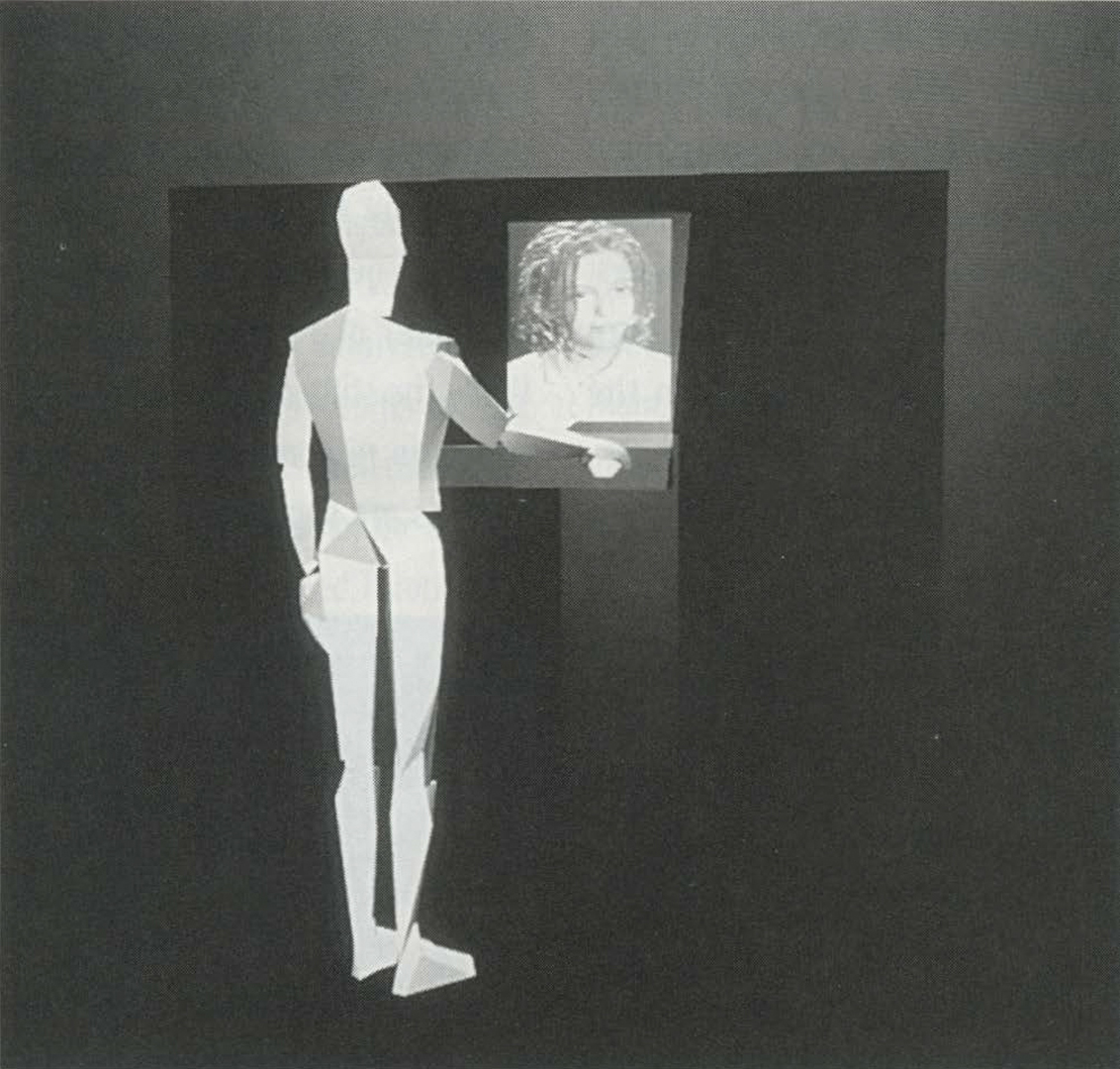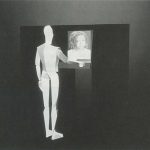Luc Courchesne: Family Portrait
Artist(s):
Title:
- Family Portrait
Exhibition:
Category:
Artist Statement:
“Who wouldn’t distrust someone coming at?him/her saying: ‘Me and my friends are not real, we are a new kind of photograph?”‘?- Adolfo Bioy-Casares
Imagine a portrait. You walk up to it and engage in conversation. You pick a question from a pre-established set on the screen. The portrait gives you a pre-recorded answer. A new set of questions, or comments appears. You get further reactions. As this process goes on, a conversation develops ac?cording to your curiosity and the subject’s mood. The encounter may be cut short due to a lack of sympathy on either part, or it may develop into dis?cussion of ideas, values or personal ex?perience. The interaction is structured into levels of intimacy;you have to get to know and trust one another before getting on to highly personal matters. In the end, you may have made a new virtual acquaintance … or friend.
The technique that I have devel?oped experiments with portraiture. Following the painted and photo?graphic portrait, the hypermedia por?trait demonstrates the same interests for human beings, this time capturing and rendering not only physical like?ness but also fragments of behavior. These virtual beings do not appear in the flesh (I am working with video); and the questions are not verbal (cho?sen from a computer screen). Yet the interactive video installation, which uses widely available technology, works as a metaphor for an encounter. As with other virtual reality systems, my portraits are worlds onto them?selves (that of the portrayed subject), in which visitors are invited to play a role (that of a conversational partner). There are some dangers (you may not like the reaction you get). But there a re also rewards (getting to know the sub?ject, and possibly discovering some?thing about him/her-or yourself ?in the process).
Imagine a series of hypermedia portraits that make a society of virtual beings. They all exist as individuals, lending themselves to personal en?counters as previously described. But they are also “aware” of one another and may react to what is happening anywhere. They may want to speak their own truth about what is being said about them, or simply to add to an interesting conversation without being asked. Or they may discuss things among themselves, chat about the weather, or argue about a favorite controversy. Who these virtual beings are and what they have in common is to be discovered by visitors.Visitors, by?their perspicacity or mishandling, may trigger a family drama that could turn a quiet portrait gallery into a video the?ater where a drama plays itself out.
A society of virtual beings is made of networked individual systems. As new virtual beings are added, each capable of hosting one active visitor, the installation grows from a single user to a multiple user system.A bet?ter balance is thus achieved between the society of virtual beings and the society of visitors. One possible out?come may be a forced interaction be?tween the society of visitors, as a re?sponse to the interaction of the soci?ety of virtual beings.
Enter a portrait gallery. Norbert is a mathematician and dancer; he is also a friend of Sebastien, an eth?nologist interested in majorettes and rugby teams. Alain is Simone’s son and the former biology profes?sor of Laurence, who specializes in archeobotany and is looking for work. Thierry and Laurence are close friends, having shared an apartment?in the past. Thierry is a writer and works in a library; this is where he met Marianne, a graduate student in economics. It is through Thierry that Marianne and Laurence met Sebastien,and through Laurence that Marianne and Sebastien met Alain, who also owns a sheep farm in the Alps that is regularly visited by most of these people. Blanche, the author’s daughter, first met Norbert in Montreal when he came to partici?pate in a dance festival and stayed in their home. She later got to meet ev?eryone else in Marseille when the author’s family spent the summer there in 1992.Thisedition of the Fam?ily Portrait is about these people; it documents their life and tells about the process in which the work evolved. The group portrait was re?corded in Marseille that summer.
Family Portrait is Luc Courchesne’s new work dealing with portraiture in the age of hypermedia. The work is supported by the lnstitut Mediterraneen de Recherche et de Creation, the Ministere de la Culture (France) and the Canada Arts Council. The installation was premiered in Aix?en-Provence (France) in June of 1993 and it will be exhibited at the Canadian Museum of Fine Arts in Ottawa, No?vember ’93 to January ’94.
I was born in 1952, the year broad?cast television began in Canada. When I came of age, television was already part of the living room furniture.Com?puters appeared later but made a quick inroad into my life as they proved es?sential to my design work. The birth of the author in me happened when I re?alized you could plug a computer into a television set.
Hypermedia means a network of nodes and links.The nodes are the content, the material of the world and the links are the freedom to move within it. A hypermedia author creates a world of possibilities; then he/she in?vites people in and give them freedom; finally he/she characterizes the expe?rience by developing a metaphor for the experience.
The builders of new worlds should not forget that what remains hidden is sometimes more important than what is shown if one is to make use of the visitor’s brain. Mystery might best pull visitors through hypermedia. They get what they are after, and in that sense, are partly re?sponsible for their experience. More than in any other medium, hypermedia entail shared authorship.
Media should not be used to cre?ate yet more images or to replace the real world with a better virtual one.The state in which we leave our first world, is essential to our survival. We are old biological apparatuses that still de?pend on the natural world.
We’ll get used to cyberspace and virtual reality, the same way we got used to sun block and indoor swim?ming pools. Once we get accustomed to new media, the problem of the art?ist remains the same: to have a vision and to express it in some form, to stretch the boundaries of reality, to decipher order in chaos or chaos in or?der. New media should be used as me?dia have been used since the begin?ning of art-making: to answer in our own words the old questions about imagination and representation, and what it is to be human.
I use it to make portraits. A portrait of someone is an account of an en?counter between the author and the subject. Painted portraits happened over long periods of time and therefore are more conceptual than photo?graphic portraits. They encapsulate in one single image hours of interaction between the model and the painter. Photography, on the other hand, makes realist portraits. The talent of the portrait photographer is to wait and pick the right moment when the person expresses the density of her being; the subject and the photogra?pher wait for that magic moment in complicity. In my portraits, the entire encounter is recorded, and material is extracted to construct a mechanics of interaction that will allow visitors to conduct their own interviews. As this happens over time, the conversation evolves toward more intimate consid?erations. The visitor will have to invest time and great care to get to the subject’s more secret personality, just as it took time and care for the author to get there.
Other Information:
Cast: Alain Archiloque, Simone Archiloque, Blanche Baillargeon, Norbert Corsino, Sébastien Darbon, Thierry Dicepolo, Laurence Foucault, Marianne Rubinstein






